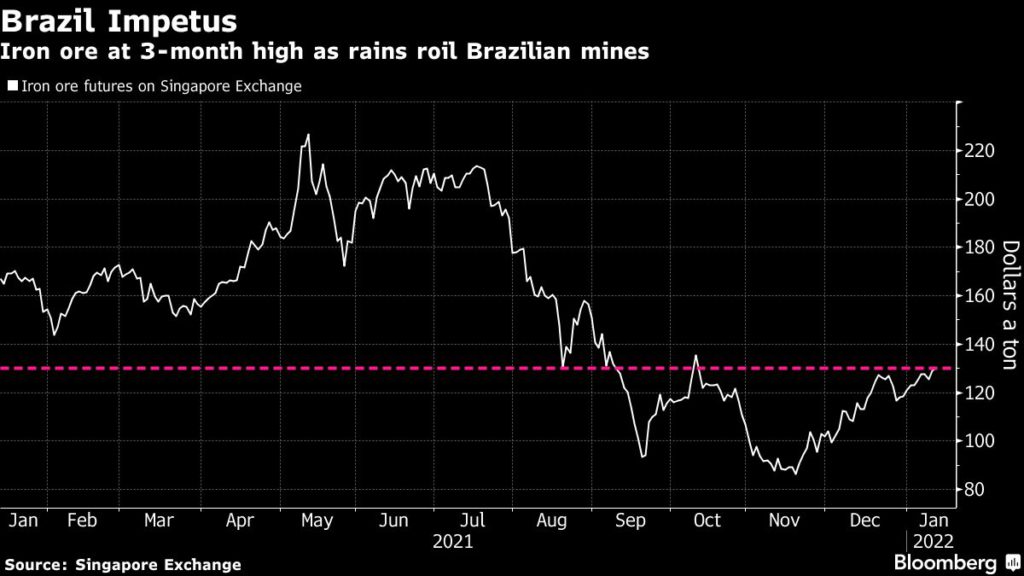Iron ore price rises as heavy rains force miners to halt operations in Brazil
Gerdau SA, Cia. Siderurgica Nacional SA and Usinas Siderurgicas de Minas Gerais SA also suspended operations in Minas Gerais this week.
While the region represented 40% of Vale’s output in the nine months through September, the company reiterated production guidance of 320 million to 335 million tonnes in 2022. Output may now be at the low end of the range, analysts said.
Regular operations continued for the Northern system, where Vale produces 60% of its total annual iron ore volumes.
In December, Brazil had 40 tailings dams on the emergency level, 36 of which are in Minas Gerais, according to the country’s mining regulator. Three of those — all owned by Vale — are at the highest alert of level 3.

On the demand side, traders are monitoring the spread of the omicron variant in top consumer China, with the northern port city of Tianjin a center of infection.
Goldman Sachs Group Inc. cut its forecast for the country’s growth this year to 4.3% from 4.8% due to the difficulty of containing the variant.
Dalian iron ore futures climbed 1.9%. According to Fastmarkets MB, benchmark 62% Fe fines imported into Northern China were changing hands for $133.68 a tonne during morning trading, up 3.5% compared to Tuesday’s closing.
“Spot prices for iron ore are expected to stay firm,” Mysteel Research & Consulting said in a note, citing higher activity from blast furnaces, restocking by mills and interrupted supplies from Brazil.
“The production shut-ins and heightened safety risks are modestly credit negative for Vale, CSN and Usiminas, but prolonged flooding that disrupts mining and logistics operations for an extended period would likely reduce their production volumes and therefore hurt cash flow and revenue more significantly,” said Moody’s in a note.
“Our view for iron ore price remains unchanged for 2022, at an average $100 tonne – lower than in 2021, but still at historically elevated levels. Producers face lower steel output in China amid environmental controls, weakening property construction market and energy pressures in manufacturing.”
(With files from Bloomberg)




